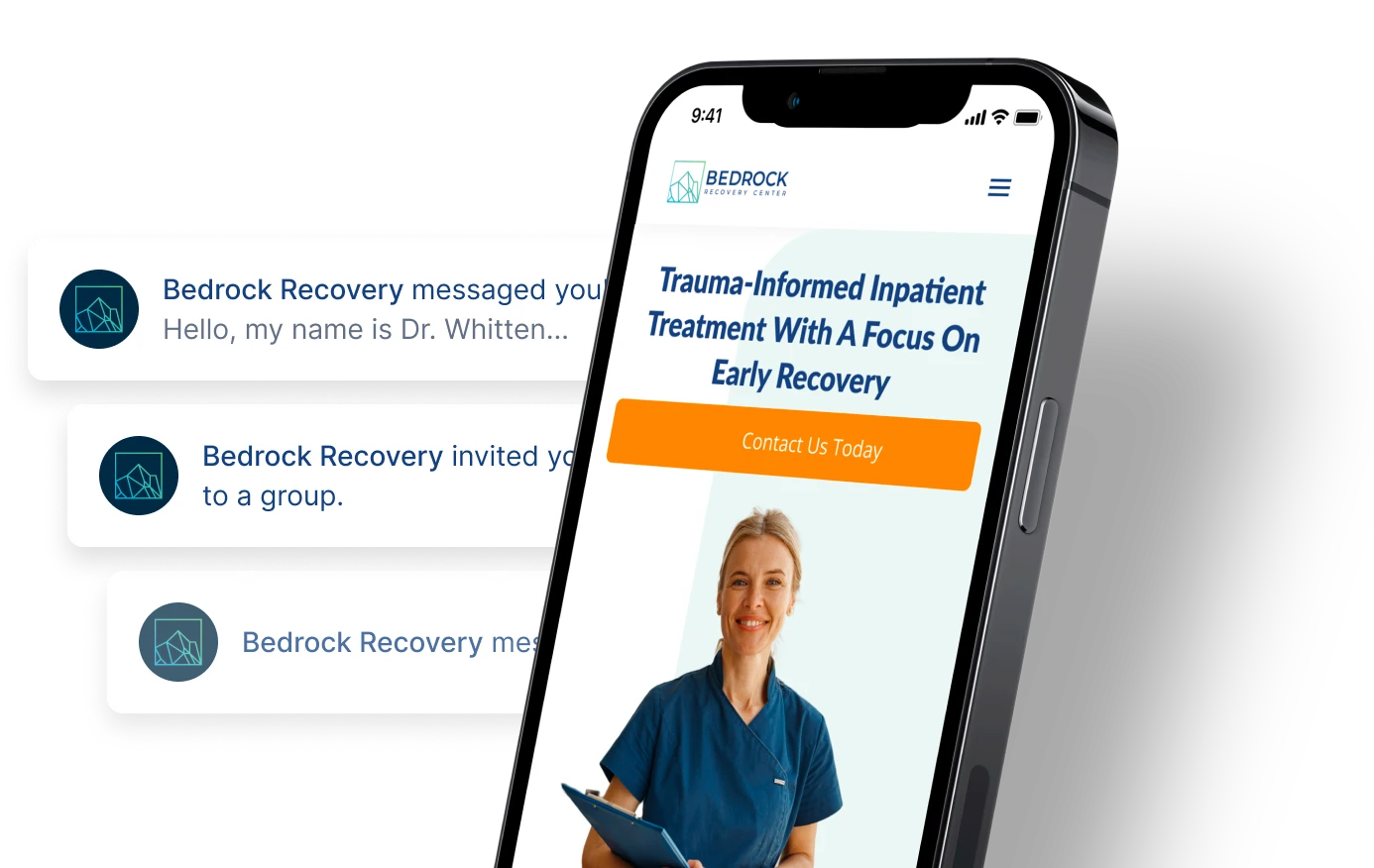
Medically Reviewed By: Kimberly Langdon M.D.
Cognitive behavioral therapy (CBT) is a type of psychological treatment that has been found effective in treating a range of mental health disorders, substance use disorders, and eating disorders.
CBT is an evidence-based and goal-oriented psychotherapy that operates by encouraging participants to evaluate their own thoughts in an effort to shape behavioral change.
The Core Principles Of Cognitive Behavioral Therapy
The core principles of cognitive behavioral therapy are based on treating the underlying cause of mental health issues or addiction.
These core principles work with one another toward the goals of handling negative thoughts and experiences, managing triggers, and creating a healthy and well-balanced life.
CBT therapy is based on a few different core principles, including:
- psychological problems are based, in part, on unhelpful ways of thinking
- psychological problems are based, in part, on learned patterns of negative behavior
- people who have mental health issues can learn coping skills to live a healthy life
CBT therapy uses these core principles to address negative thoughts and begin cognitive restructuring.
Cognitive Restructuring
The main use of cognitive restructuring is to examine negative thought patterns.
The steps of cognitive restructuring include:
- write down a sentence describing the situation
- identify the most upsetting feeling in the situation
- identify your thoughts about the situation that are underlying the upset feelings
- evaluate the accuracy of the thought objectively
- make a decision about whether the thought is accurate or not
- take action based on your decision
The process of cognitive restructuring forms the basis for behavior modification.
Behavior Modification
Behavior modification helps someone to create better outcomes. Instead of focusing on negative thoughts, behavior modification focuses on the sequence of behavior.
This aspect of CBT therapy seeks to alter actions leading to a specific outcome. The main goal of behavior modification is to replace undesirable behaviors with more desirable ones.
Behavior modification can be used in addiction treatment, the treatment of mental health conditions, and the treatment of people with a dual diagnosis.
The Therapeutic Process Of Cognitive Behavioral Therapy
The therapeutic process of cognitive behavioral therapy has several steps.
When you first meet with a CBT therapist, there is often a general assessment of your mental health condition, substance abuse, or other circumstances.
After identifying your specific issues and learning more about you, various strategies are used to treat behavioral health issues, such as teaching positive coping mechanisms and communication skills.
Assessment
The assessment period of CBT is spent ensuring that CBT is the right therapy for you and getting to know more about you. Your therapist will ask questions about your life and background.
If you have been diagnosed with obsessive-compulsive disorder (OCD), post-traumatic stress disorder (PTSD), or other mental condition, your therapist will ask whether your condition interferes with family, work, or your social life to establish the severity of the condition.
The assessment period may also seek to pinpoint distressing symptoms. If CBT seems appropriate, your therapist will let you know what to expect from treatment.
Tools And Techniques
There are a variety of tools and techniques involved in cognitive behavioral therapy. Some of the most common include cognitive journaling, guided discovery, and mindfulness.
Cognitive Journaling
Cognitive journaling is one technique used to record someone’s fears and thoughts triggered in certain situations. This technique seeks to identify thinking patterns and responses.
Guided Discovery
Guided discovery occurs when the therapist asks open-ended questions to allow patients to consider their thought process and how it impacts their daily lives.
When someone is aware of how their brain works, they can be empowered to make positive changes to their thought patterns.
Mindfulness
Mindfulness and relaxation strategies are another useful tool that can help with negative thinking, especially for those with anxiety disorders or those who need anger management treatment.
Applications For Cognitive Behavioral Therapy
CBT is used to treat a variety of disorders through outpatient treatment plans, intensive outpatient programs (IOP), partial hospitalization programs (PHP), and inpatient programs.
Some of the most common applications for CBT include treatment for:
- substance use disorders
- mood disorders
- anxiety disorders
Substance Abuse Disorders
When CBT is used for addiction treatment, the goal is often to encourage the client to examine feelings of self-doubt, self-loathing, and other negative emotions that contribute to substance use.
The therapist encourages the client to ask whether these thoughts are useful or even true, and makes suggestions on how to shift these thoughts into a more proactive way of thinking.
They also address repetitive behaviors and triggers that often result in the client using drugs or alcohol.
Together, the therapist and the client work on cognitive restructuring and coping mechanisms to work through the initial stages of recovery and promote relapse prevention.
CBT may be combined with other therapeutic interventions, such as contingency management, peer support groups, and mindfulness exercises to increase its efficacy.
Mood Disorders
Cognitive behavioral therapy is also an effective treatment for mood disorders, including bipolar disorder and depression.
CBT teaches participants about the connection between behaviors, thoughts, and feelings to enable them to change negative thoughts and improve problem-solving skills.
As a treatment option for mood disorders, CBT is also effective in promoting positive self-esteem.
Anxiety Disorders
When CBT is used to address anxiety disorders, it is often combined with other types of therapy like exposure therapy.
Anxiety disorders are often marked by fear and avoidance. CBT helps clients address negative thought patterns and provide a more realistic view of these thoughts.
Evidence For The Efficacy Of Cognitive Behavioral Therapy
Peer-reviewed research provides strong evidence that CBT is an effective treatment for anxiety, mood disorders, and substance abuse.
In fact, an analysis of 41 studies also found that CBT helped to improve the symptoms of anxiety, OCD, and PTSD.
Several studies compared CBT to other treatment modalities and found that it was consistently more effective even after a six-month and twelve-month follow-up.
CBT also has a high level of observed support for the treatment of substance use and has been proven to improve self-control, teach coping mechanisms, and avoid triggers.
Start Treatment In Massachusetts
If you or a loved one is seeking an addiction treatment program for alcohol addiction or drug addiction recovery in Boston, we can help.
Contact our team at Bedrock Recovery Center to learn what treatment plans we offer.
- American Psychological Association https://www.apa.org/pubs/books/supplemental/Treatment-for-Postdisaster-Distress/Handout-27.pdf/
- American Psychological Association https://www.apa.org/ptsd-guideline/patients-and-families/cognitive-behavioral/
- Annals of Internal Medicine https://www.acpjournals.org/doi/10.7326/M14-2841/
- Applied Behavioral Analysis https://www.appliedbehavioranalysisedu.org/2022/08/5-cognitive-behavioral-therapy-techniques-professionals-use-to-change-lives/
- Child Mind Institute https://childmind.org/care/areas-of-expertise/mood-disorders-center/mood-disorders-treatment/
- National Institute on Drug Abuse https://nida.nih.gov/sites/default/files/podat-3rdEd-508.pdf/
- National Library Of Medicine https://www.ncbi.nlm.nih.gov/books/NBK459285/
- National Library Of Medicine https://www.ncbi.nlm.nih.gov/pmc/articles/PMC2897895/
- National Library Of Medicine https://www.ncbi.nlm.nih.gov/pmc/articles/PMC5797481/
- NHS https://www.nhs.uk/mental-health/talking-therapies-medicine-treatments/talking-therapies-and-counselling/cognitive-behavioural-therapy-cbt/how-it-works/
- Psychiatry Online https://focus.psychiatryonline.org/doi/10.1176/appi.focus.20200045/
- Wiley Library https://onlinelibrary.wiley.com/doi/10.1002/wps.21069/
- Wiley Library https://onlinelibrary.wiley.com/doi/epdf/10.1002/da.22728/
